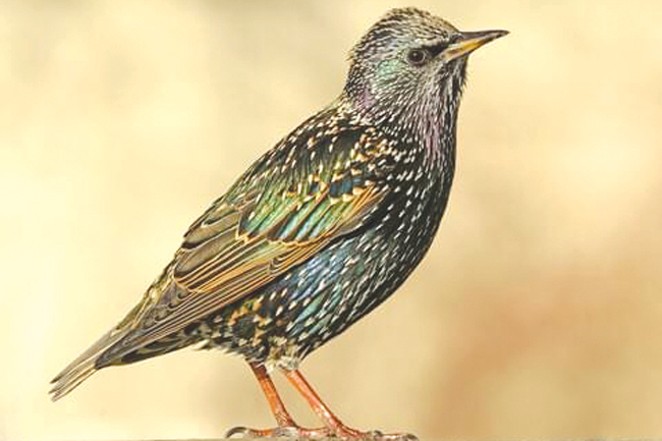Before we get into the havoc alien starlings, or stares, are causing here in the U.S., I have to comment on the nutty title for this piece.
At one time, way back in the mid-1800s, when Shakespeare was prominent in the intellectual world, the European starling, Sturnis vulgaris, was known in Ireland as the stare. (Not having any Irish ancestors, I have no idea how that's pronounced.)
Poetry was prevalent in those glorious days, and one of the leading artists was Irishman William Butler Yeats, who wrote a poem titled, "The Stare Nest By My Window."
The bees build in the crevices
Of loosening masonry, and there
The mother birds bring grubs and flies.
My wall is loosening; honey-bees,
Come build in the empty house of the stare.
We are closed in, and the key is turned
On our uncertainty; somewhere
A man is killed, or a house burned.
Yet no clear fact to be discerned:
Come build in the empty house of the stare.
A barricade of stone or of wood;
Some fourteen days of civil war:
Last night they trundled down the road
That dead young soldier in his blood:
Come build in the empty house of the stare.
We had fed the heart on fantasies,
The heart's grown brutal from the fare,
More substance in our enmities
Than in our love; O honey-bees,
Come build in the empty house of the stare.
—William Butler Yeats (1865-1939)
As far as I know, the last two lines in that poem have little to do with starlings and their nesting space if occupied by bees. However, that said, if bees gave up an old woodpecker cavity, you can bet your bottom dollar a pair of starlings would be right there to move in and raise their babies...
The alien European starling, which is found throughout the world in several subspecies, started out life in Africa and Europe, and, thanks to one thing or another, have been carried to many other places around the world by man.
About 100 of them got here because a small bunch of people wanted to propagate birds of Shakespeare's period. Well, not right here in Oregon, but they carried them from England to Central Park in New York by Shakespeare look-alike, Eugene Schieffelin, and his pals who belonged to the New York Genealogical, Biographical and New York Zoological Societies.
In 1758, Carl Linnaeus ascribed the scientific name to starlings that are making so much mischief in our nation and other places around the world. Aside from stealing nesting sites from native birds and mammals—which is a biological nightmare—the starlings also compete for food.
One spring day in Sisters I witnessed how European starlings can organize themselves and take over a situation that helps them prosper, and causes severe problems to native species.
I was in my parked car on the west end of Sisters, next to an old cow pasture with a sidewalk between me and the meadow. I was watching a soaring buteo to make sure it was a red-tailed hawk when I became aware of about 10 or 15 local robins alighting near me and beginning to forage for terrestrial prey. A male robin very near me caught my eye as he slowly walked through the grass, tipping his head as if listening.
Then right ahead of me a group of European starlings landed on the curb, and just stayed there watching what the robins were doing. Within 10 minutes the starlings suddenly moved in on the robins, chasing them away from the lawn with violent bursts of stabbing bills. The starlings then proceeded to hunt for prey in the very same place where the robins had been.
Within moments they were stalking prey, stabbing worms and some of them even tipping their heads as the robins had been doing. This is just one small example how starlings can learnt from then mimic our native birds.
In addition, I could mention here the hours I spent trapping starlings that tried to use the nesting box I had put up for the native Red-shafted flickers... Maddeningly, the starlings usually prevailed. Next time I'll be using predator guards on the box.
One more scary example are starlings nesting in the lower substrate of golden eagle nests. That started about 10 years back and has reached almost 40% today.
This is worrisome to me, regarding the introduction of parasites starlings carry, as well as nest disturbance caused by these alien invaders.
So, I thank wildlife services for the clever traps they are using in an attempt to reduce the starling numbers, but unfortunately the starlings are still winning...























